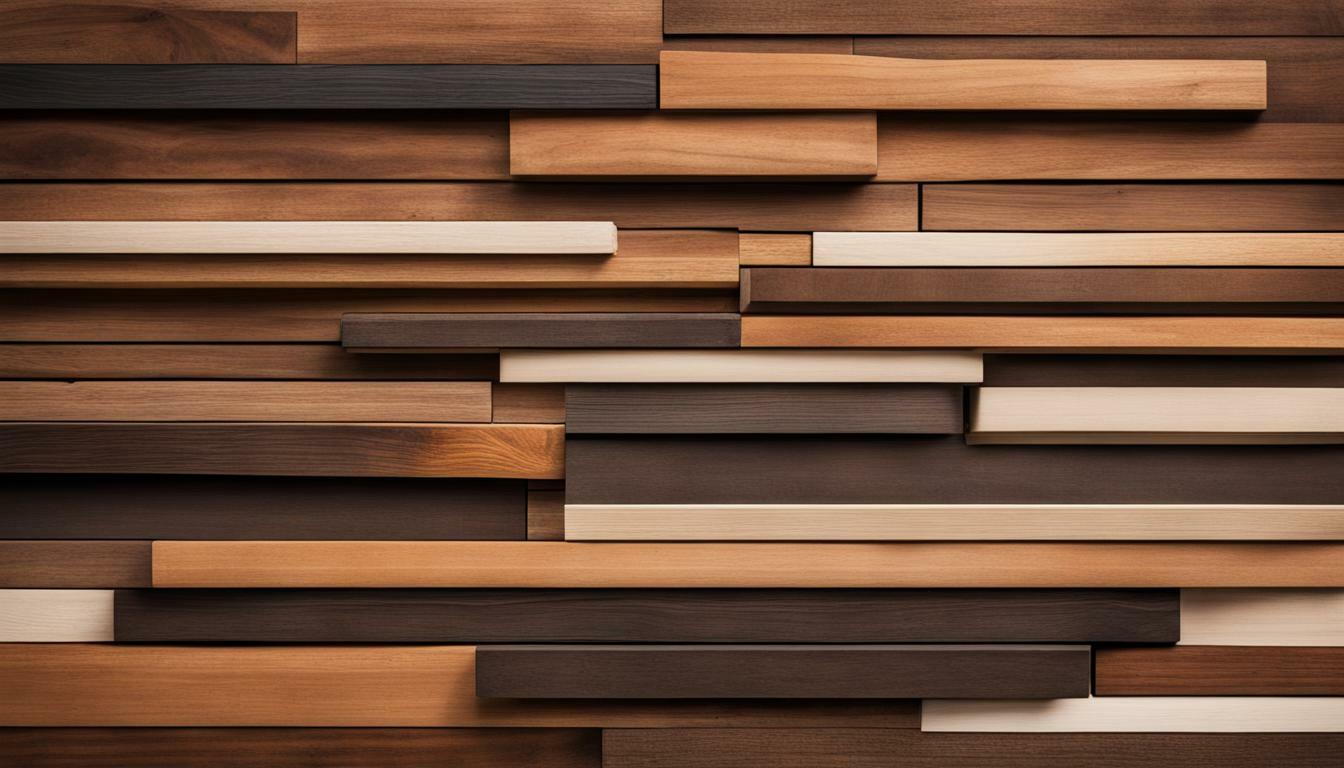When you’re new to woodworking, selecting the right type of wood is essential for your projects’ success. The type of wood you choose will determine the ease of working with it, the cost, and the overall outcome of your woodworking projects. To help you get started on your woodworking journey, here are some recommended woods for beginners:
Key Takeaways:
- Pine, fir, soft maple, spruce, white oak, beechwood, poplar wood, and cherry are all recommended woods for beginners.
- These woods are easy to work with, affordable, and suitable for various woodworking projects.
- Having the right woodworking tools and learning proper techniques and safety precautions are crucial.
- Start with simple projects and gradually build your skills and knowledge.
- With practice and patience, you can become a proficient woodworker over time.
Recommended Woods for Beginners Woodworking
Here are some excellent wood options that are beginner-friendly and perfect for your woodworking projects. Choosing the right wood is crucial for your success as a beginner woodworker. These woods are easy to work with, budget-friendly, and suitable for various projects. Let’s explore them:
Pine
Pine wood is a versatile and affordable choice for beginners. It’s readily available in most hardware stores and can be used for a wide range of projects, from small crafts to furniture. Pine is easy to work with and forgiving, making it ideal for those just starting out.
Fir
Fir wood is another great option for beginners. It is easy to work with, budget-friendly, and forgiving. Fir is commonly used in construction and woodworking projects. Whether you’re building a small decorative item or a larger piece of furniture, fir wood is a reliable choice.
Soft Maple
Soft maple is a hardwood that is known for its smooth surface and easy workability. It is a beginner-friendly wood that can be used for various projects. Soft maple is especially popular for smaller crafts and furniture making.
Spruce
Spruce wood is lightweight and easy to shape, making it perfect for beginners. It is commonly used in making musical instruments, furniture, and smaller decorative items. Spruce is affordable and readily available, making it a great choice for your woodworking projects.

Remember, as a beginner, it’s important to start with simple projects and gradually build your skills and knowledge. Along with choosing the right wood, make sure you have the necessary woodworking tools and equipment. Saws, drills, clamps, chisels, planers, sanders, and finishers are some of the tools you may need.
Learning the proper techniques and safety precautions is crucial for successful woodworking. There are plenty of online resources, tutorials, and classes available that can help you improve your woodworking skills. Don’t be afraid to make mistakes and learn from them.
In conclusion, by selecting beginner-friendly woods like pine, fir, soft maple, and spruce, you can kickstart your woodworking journey on the right foot. With practice, patience, and a willingness to learn, you’ll soon become a skilled woodworker capable of tackling more challenging projects.
Pine: A Versatile Choice for Beginners
Pine wood is a versatile and wallet-friendly option that is great for beginner woodworking projects. It is one of the most widely available types of wood, making it easily accessible for beginners. Pine wood has a light color with a straight grain, which gives it a simple and natural look. This makes it suitable for various projects, from small crafts to furniture.
One of the advantages of using pine wood is its affordability. As a beginner, you may not want to invest a lot of money in expensive wood. Pine offers a cost-effective solution without compromising on quality. It is a softwood, which means it is relatively easy to work with, making it perfect for those who are just starting out in woodworking.
When working with pine, it is important to note that it is a softer wood, which makes it susceptible to dents and scratches. However, these can easily be fixed with the right techniques. Pine wood also takes stains and finishes well, allowing you to customize your projects with different colors and finishes.

In summary, pine wood is an ideal choice for beginners in woodworking. It is versatile, affordable, and easy to work with. With pine, you can start your woodworking journey on the right foot, experimenting with different projects and techniques. Remember to have the right tools and safety precautions in place, and gradually challenge yourself with more complex projects as you gain experience and confidence.
Fir: Easy to Work With and Budget-Friendly
If you’re looking for a wood that is easy to work with and won’t break the bank, fir wood is a great option for beginners. It is known for its forgiving nature, making it ideal for those who are still developing their woodworking skills. Not only is fir wood relatively inexpensive, but it is also readily available in most hardware stores, making it convenient for beginners to access. Fir wood’s soft texture and straight grain make it easy to cut, shape, and sand. It is also less prone to splitting, which is beneficial for beginners who may not have mastered the art of woodworking joinery just yet. This forgiving nature allows beginners to experiment and learn without the fear of ruining expensive wood. Another advantage of fir wood is its versatility. It is suitable for a wide range of woodworking projects, including furniture, shelves, and decorative items. Its light color and minimal grain make it a blank canvas for staining or painting, allowing beginners to customize their projects to their liking. In summary, fir wood is an ideal choice for beginner woodworkers. Its affordability, ease of use, and versatility make it a practical option for those just starting out. By using fir wood, beginners can build their skills and confidence as they embark on their woodworking journey.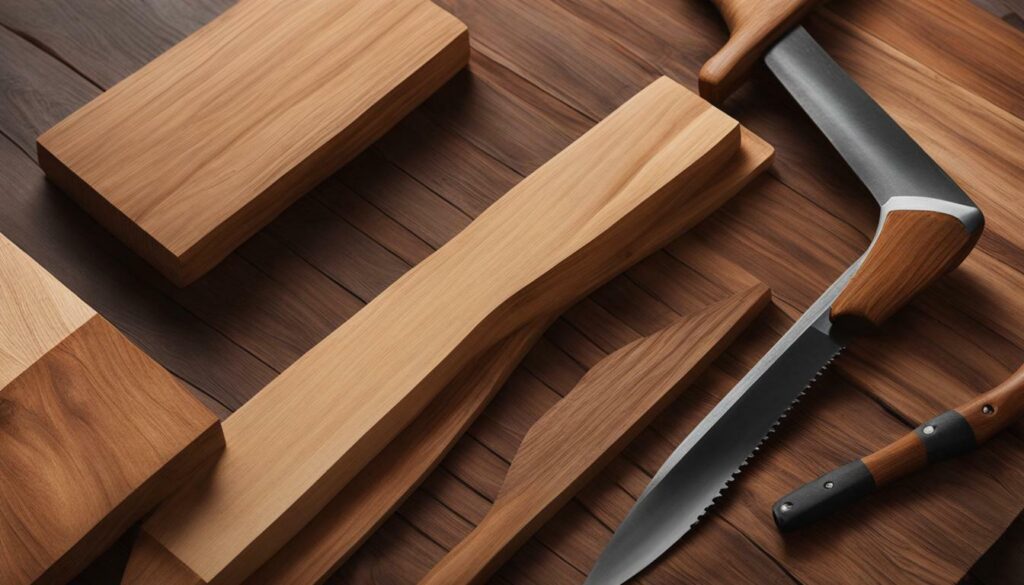
Soft Maple: A Smooth and Beginner-Friendly Wood
Soft maple is a beginner-friendly wood that offers a smooth surface and is perfect for a wide range of woodworking projects. Its ease of workability and attractive appearance make it an ideal choice for beginners looking to create beautiful and functional pieces. Whether you’re building small crafts or furniture, soft maple provides a versatile and reliable option.
This wood is known for its consistent grain patterns and creamy color, which adds warmth and character to any project. Its fine texture allows for easy sanding and finishing, ensuring a professional-looking result. Additionally, soft maple accepts stain and paint well, giving you the freedom to customize your creations to suit your style and preferences.
When working with soft maple, it’s important to note that, despite its name, it is still a hardwood. Its density and stability contribute to its durability, making it suitable for long-lasting projects. This wood is readily available and reasonably priced, making it an excellent choice for beginners who want quality without breaking the bank.
| Advantages of Soft Maple for Beginners | Disadvantages of Soft Maple for Beginners |
|---|---|
| Easy to work with and shape | May require special tools for intricate designs |
| Smooth surface and fine texture | Not as widely available as some other woods |
| Accepts stains and paints well | Requires proper finishing to prevent blotching |
| Reasonably priced for its quality | Can be prone to minor warping or movement |
Whether you’re just starting out in woodworking or looking to expand your skills, soft maple is a fantastic wood choice. Its beginner-friendly nature, combined with its versatility and visual appeal, makes it an excellent option for all types of projects. So grab your tools, unleash your creativity, and start crafting with soft maple today!
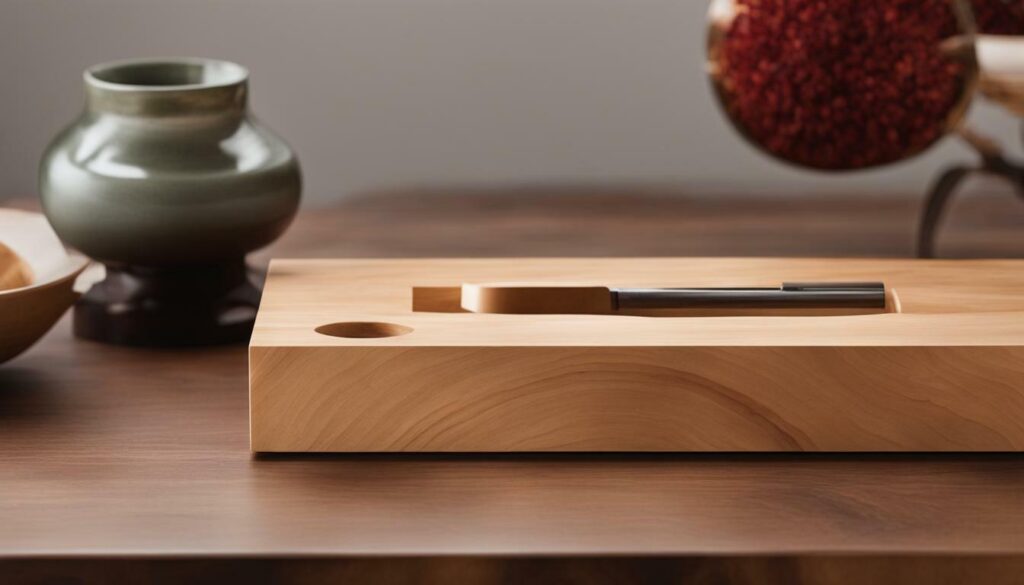 If you’re looking for a wood that is lightweight and easy to shape, spruce wood is an excellent option for beginners in woodworking. Spruce is known for its versatility, making it suitable for a variety of projects, from small crafts to furniture making. Its light weight makes it easier to handle, especially for those who are new to woodworking.
Spruce wood has a straight grain pattern, which makes it easy to work with and shape according to your design. Whether you’re carving intricate details or creating smooth surfaces, spruce wood allows for precise craftsmanship. It is also relatively affordable, making it a practical choice for beginners who want to practice their skills without breaking the bank.
In addition to its ease of use, spruce wood is known for its durability. It has good dimensional stability, meaning it doesn’t shrink or expand significantly with changes in humidity. This makes spruce wood ideal for long-lasting projects that can withstand the test of time.
When working with spruce wood, it’s important to use the right tools and techniques. A sharp handsaw, chisels, and sandpaper are essential for achieving clean cuts and smooth finishes. Take the time to learn proper woodworking techniques, such as measuring accurately and using clamps to secure your workpieces. Safety should also be a priority, so don’t forget to wear protective gear like goggles and gloves.
To summarize, spruce wood is a fantastic choice for beginners in woodworking due to its lightweight nature, ease of shaping, affordability, and durability. With the right tools, techniques, and safety precautions, you can create beautiful and functional projects using this versatile wood. So grab your tools, unleash your creativity, and embark on your woodworking journey with spruce wood as your trusted companion.
If you’re looking for a wood that is lightweight and easy to shape, spruce wood is an excellent option for beginners in woodworking. Spruce is known for its versatility, making it suitable for a variety of projects, from small crafts to furniture making. Its light weight makes it easier to handle, especially for those who are new to woodworking.
Spruce wood has a straight grain pattern, which makes it easy to work with and shape according to your design. Whether you’re carving intricate details or creating smooth surfaces, spruce wood allows for precise craftsmanship. It is also relatively affordable, making it a practical choice for beginners who want to practice their skills without breaking the bank.
In addition to its ease of use, spruce wood is known for its durability. It has good dimensional stability, meaning it doesn’t shrink or expand significantly with changes in humidity. This makes spruce wood ideal for long-lasting projects that can withstand the test of time.
When working with spruce wood, it’s important to use the right tools and techniques. A sharp handsaw, chisels, and sandpaper are essential for achieving clean cuts and smooth finishes. Take the time to learn proper woodworking techniques, such as measuring accurately and using clamps to secure your workpieces. Safety should also be a priority, so don’t forget to wear protective gear like goggles and gloves.
To summarize, spruce wood is a fantastic choice for beginners in woodworking due to its lightweight nature, ease of shaping, affordability, and durability. With the right tools, techniques, and safety precautions, you can create beautiful and functional projects using this versatile wood. So grab your tools, unleash your creativity, and embark on your woodworking journey with spruce wood as your trusted companion.
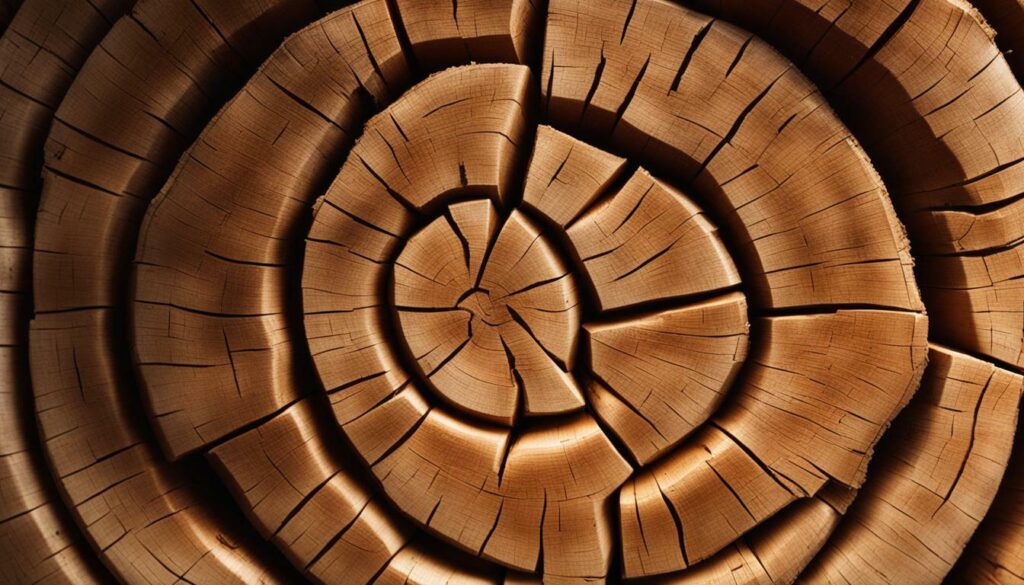
| Advantages of Spruce Wood | Disadvantages of Spruce Wood |
|---|---|
|
|
White Oak: Durable and Beautiful
White oak is a hardwood that offers durability and a beautiful aesthetic, making it an excellent choice for beginner woodworkers willing to take on a bit more challenge. This wood is known for its strength and resilience, making it suitable for furniture making and other projects that require durability. The natural grain patterns and golden tones of white oak add a touch of elegance to any piece.
When working with white oak, it is important to note that it can be more challenging to work with compared to other beginner-friendly woods. Its density can make cutting and shaping a bit more difficult, so it is essential to use sharp tools and take your time to ensure precision. However, with practice and patience, you can achieve stunning results with white oak.
| Pros | Cons |
|---|---|
| – Durable and long-lasting | – Can be more challenging to work with |
| – Beautiful grain patterns and color | – Requires sharp tools for precision |
| – Ideal for furniture making |
Whether you’re planning to create a stunning dining table or a timeless bookshelf, white oak will provide the strength and beauty you desire. Its durability ensures that your creations will stand the test of time, becoming cherished heirlooms for generations to come. Keep in mind that this wood may require more effort and attention to detail, but the end result will be worth it.
Start Your White Oak Project Today!
If you’re ready to take your woodworking skills to the next level, consider working with white oak. Its durability and stunning appearance will make your projects stand out. Remember to use sharp tools, take your time, and practice your techniques. With dedication and a bit of challenge, you’ll become a skilled woodworker in no time.

Beechwood: Sturdy and Easily Workable
Beechwood is a sturdy and easily workable option, making it a top choice for beginners looking to create furniture, cabinetry, or even tool handles. Its smooth and attractive grain pattern adds a touch of elegance to any woodworking project. With its durability, beechwood can withstand everyday use and is resistant to warping or splitting.
One of the advantages of beechwood is its versatility. It can be easily shaped and carved, allowing beginners to experiment with different designs and styles. Whether you’re creating intricate details on furniture or simple handles for your tools, beechwood offers the flexibility you need.
When it comes to finishing, beechwood takes stains and paints well, giving you the option to customize the final look of your project. Additionally, beechwood is known for its excellent gluing and screw-holding properties, ensuring the durability of your creations.
Suggested Uses for Beechwood:
- Furniture making: Beechwood’s strength and workability make it ideal for crafting chairs, tables, and cabinets.
- Cabinetry: Build high-quality storage solutions or kitchen cabinets using beechwood for a beautiful and functional space.
- Tool handles: Create comfortable and durable tool handles that can withstand heavy-duty use.
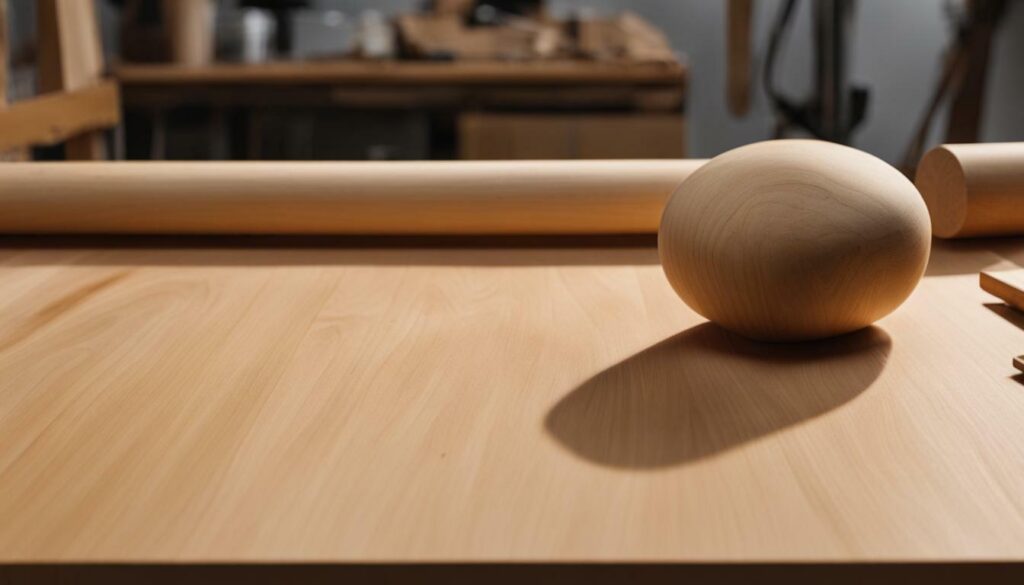
| Advantages | Disadvantages |
|---|---|
| Sturdy and durable | Can be relatively expensive |
| Easily workable | Requires proper finishing techniques for a polished look |
| Attractive grain pattern | |
| Excellent gluing and screw-holding properties |
Poplar Wood: Great for Learning and Practicing Techniques
Poplar wood is a popular choice among beginners as it provides ample opportunities to learn and practice various woodworking techniques. This affordable and readily available wood is known for its workability and versatility. Whether you’re interested in mastering joinery, carving, or shaping, poplar wood is an ideal option for honing your skills.
One of the key advantages of using poplar wood for beginner woodworking projects is its forgiving nature. It is relatively forgiving when it comes to mistakes, allowing you to make adjustments and corrections without compromising the overall project. Additionally, poplar wood has a straight grain, making it easier to work with and providing a smooth surface that is perfect for painting or staining.
When working with poplar wood, it is important to take note of its natural color variation. Poplar wood ranges in color from pale yellow to light brown, with occasional streaks of green or purple. Embrace these variations as they can add unique character to your projects. If you prefer a more consistent appearance, consider using wood stains or paint to achieve the desired look.
Essential Woodworking Tools
As you embark on your woodworking journey with poplar wood, it is essential to have the right tools at your disposal. Here are some of the essential woodworking tools that will assist you in working with poplar wood:
| Tool | Description |
|---|---|
| Saw | A saw is necessary for cutting the poplar wood into the desired shape and size. Choose a suitable saw based on your project requirements and personal preference. |
| Chisels | Chisels are used for carving and shaping the poplar wood. A set of different-sized chisels will give you versatility in your woodworking projects. |
| Clamps | Clamps are essential for holding the poplar wood securely in place while you work on it. They ensure that your pieces remain stable and help prevent mistakes. |
| Sanders | Sanders are useful for achieving a smooth and polished finish on your poplar wood projects. They help remove imperfections and prepare the surface for final touches. |
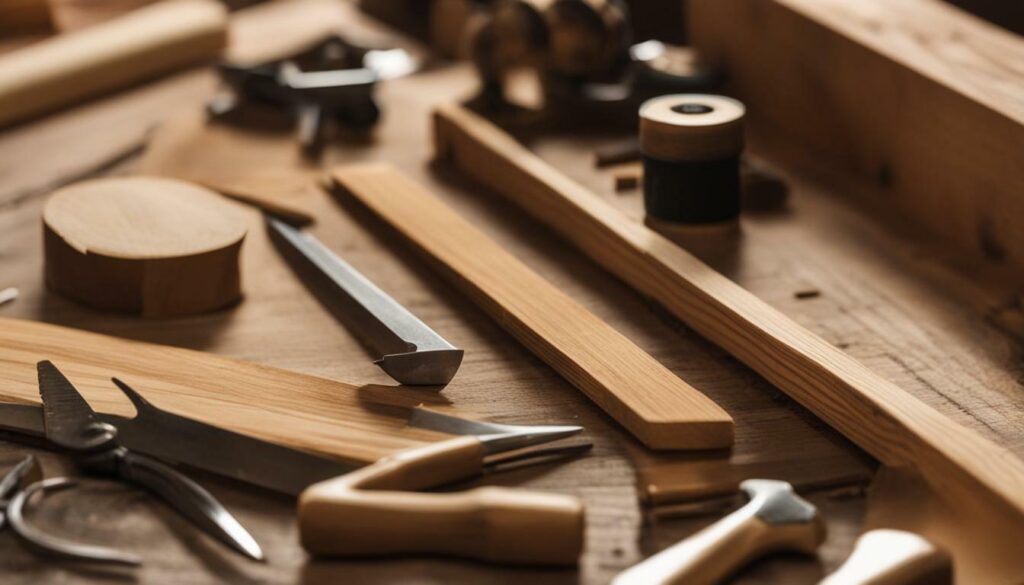
Remember, starting with simple projects and gradually building your skills and knowledge is the key to becoming a proficient woodworker. With poplar wood as your chosen material, you can embark on an exciting woodworking journey filled with creativity and growth.
Cherry: A Beautiful Hardwood for Beginner Projects
If you’re ready to tackle more advanced projects and want to work with a visually stunning wood, cherry is an excellent choice for beginners. Known for its rich color and distinct grain patterns, cherry wood adds a touch of elegance to any woodworking project. Whether you’re crafting a small jewelry box or a larger piece of furniture, cherry wood will make your project stand out.
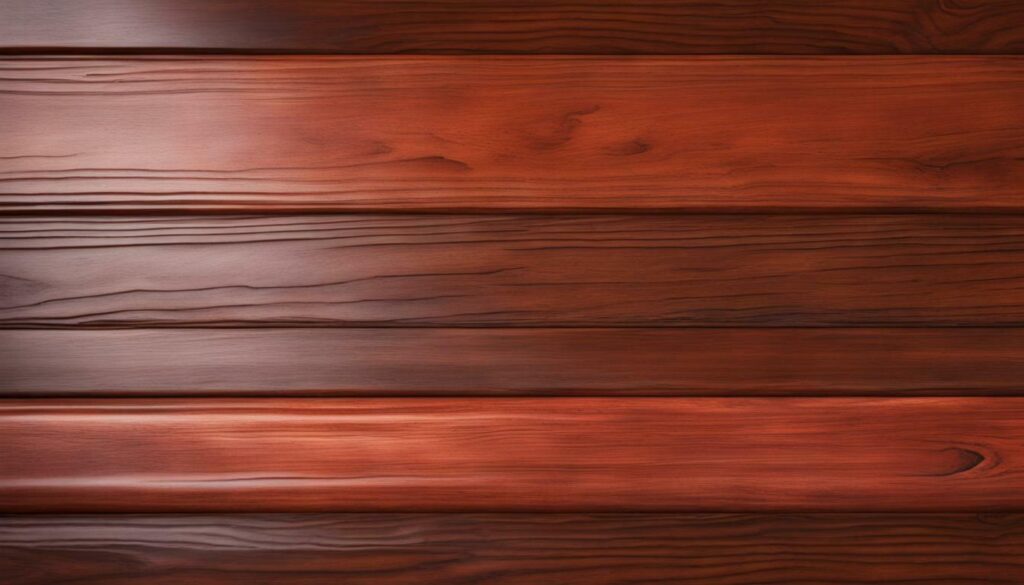
In addition to its aesthetic appeal, cherry wood is also known for its durability. This hardwood is strong and resilient, making it suitable for furniture that needs to withstand daily use. Its natural resistance to rot and decay further enhances its longevity, ensuring that your creations will last for years to come.
Working with cherry wood is a pleasure for beginners. It has a smooth and consistent texture, making it easy to carve, sand, and shape. This makes it a great choice for those who are just starting out and honing their woodworking skills. Plus, cherry wood finishes beautifully, allowing you to achieve a professional-looking result even as a beginner.
When using cherry wood, it’s important to take note of its tendency to darken over time when exposed to sunlight. This natural aging process gives cherry wood a warm, reddish-brown patina that many woodworkers find desirable. To maintain the wood’s color, it’s recommended to use a UV-protective finish.
Recommended Cherry Wood Projects for Beginners
Here are a few project ideas for beginners looking to explore the beauty of cherry wood:
- Jewelry box: Craft a small box with intricate details to showcase the natural beauty of cherry wood.
- Cutting board: Create a functional kitchen accessory that combines the durability of cherry wood with its striking aesthetics.
- Picture frame: Frame your favorite photographs or artwork with a cherry wood frame, adding a touch of elegance to your living space.
Remember, as a beginner, it’s important to start with simpler projects and gradually work your way up to more complex designs. This will allow you to gain confidence and develop your woodworking skills while enjoying the beauty of cherry wood.
| Pros | Cons |
|---|---|
| Visually stunning with rich color and grain patterns | Darkens over time when exposed to sunlight |
| Durable and long-lasting | More expensive than some other woods |
| Easy to work with and finishes beautifully |
“Cherry wood adds a touch of elegance to any woodworking project.”
In conclusion, cherry wood is a beautiful and durable option for beginners looking to create stunning woodworking projects. With its rich color, distinct grain patterns, and easy workability, cherry wood allows beginners to achieve professional-looking results. Start with smaller projects and gradually work your way up to more complex designs to unlock the full potential of this visually stunning wood.
Conclusion
Choosing the best wood for your beginner woodworking projects can set you up for success as you embark on your woodworking journey. When starting woodworking, it’s important to select the right type of wood that is easy to work with, affordable, and suitable for various projects.
Recommended woods for beginners include pine, fir, soft maple, spruce, white oak, beechwood, poplar wood, and cherry. These woods offer different characteristics and are suitable for various woodworking projects.
In addition to choosing the right wood, having the proper woodworking tools is essential. Saws, drills, clamps, chisels, planers, sanders, and finishers are some of the tools you may need to complete your projects.
Remember, learning the proper techniques and safety precautions is crucial for successful woodworking. Starting with simple projects and gradually building your skills and knowledge will help you become a proficient woodworker over time. So, go ahead and get started with your woodworking projects using the recommended woods for beginners!
FAQ
Q: What wood should I use for beginners woodworking?
A: When starting woodworking as a beginner, it is recommended to choose woods such as pine, fir, soft maple, spruce, white oak, beechwood, poplar wood, and cherry. These woods are easy to work with, affordable, and suitable for various projects.
Q: Why are these woods recommended for beginners?
A: These woods are beginner-friendly as they are easy to work with, forgiving, and readily available. They allow beginners to practice woodworking techniques without creating unnecessary frustration.
Q: Can I use other types of wood as a beginner?
A: While the recommended woods are ideal for beginners, you can experiment with other woods as your skills progress. Just remember to choose woods that are suitable for your project and align with your budget and skill level.
Q: What are the essential woodworking tools for beginners?
A: Some essential woodworking tools for beginners include saws, drills, clamps, chisels, planers, sanders, and finishers. These tools will help you cut, shape, and finish your wood projects.
Q: How can I learn woodworking techniques as a beginner?
A: Learning woodworking techniques can be done through various resources such as online tutorials, books, classes, or even by seeking guidance from experienced woodworkers. Starting with simple projects and gradually building your skills and knowledge is the best approach.
Q: What safety precautions should I take when woodworking as a beginner?
A: Safety is paramount in woodworking. Some safety precautions to follow include wearing protection gear (safety glasses, ear protection, etc.), using tools correctly, practicing proper handling of sharp objects, and keeping a clean and organized workspace to minimize accidents.
Q: How can I start woodworking as a complete beginner?
A: To start woodworking as a complete beginner, begin by gathering the necessary tools and selecting an appropriate wood for your project. Start with simple projects to build your skills, and gradually take on more challenging projects as you gain confidence and experience.
What is the Most Recommended Wood for Beginner Woodworking Projects?
When it comes to beginner woodworking projects, the most recommended wood for woodworking is often pine. It’s a versatile and affordable option that is readily available. Pine is relatively soft and easy to work with, making it ideal for those learning the ropes of woodworking. Its light color also allows for beautiful staining or painting.

